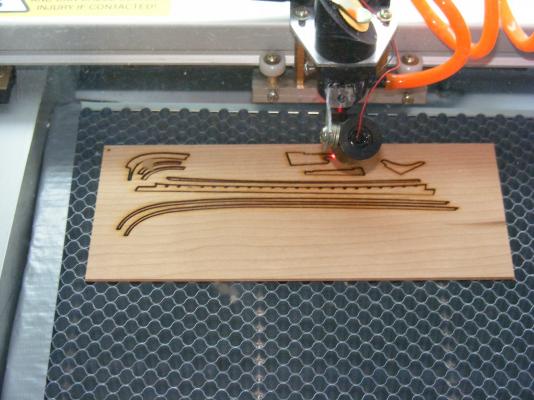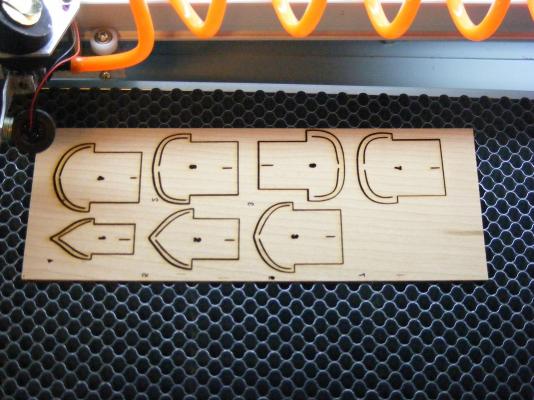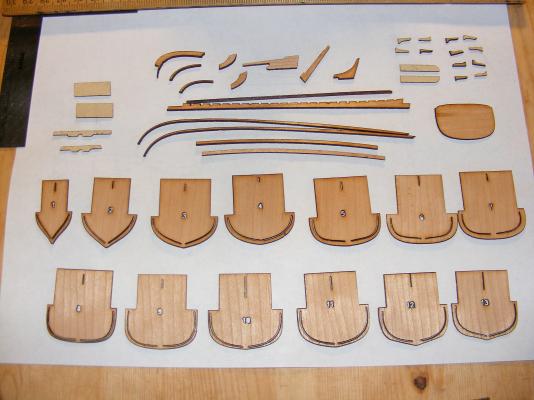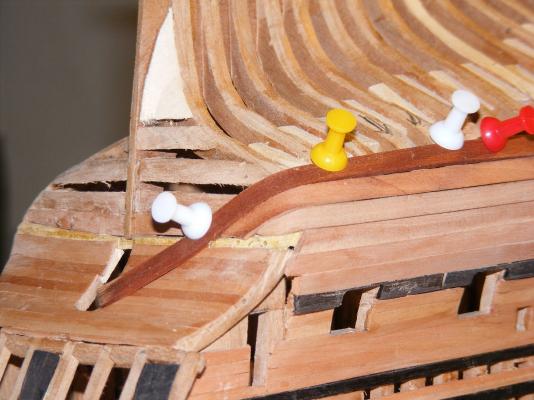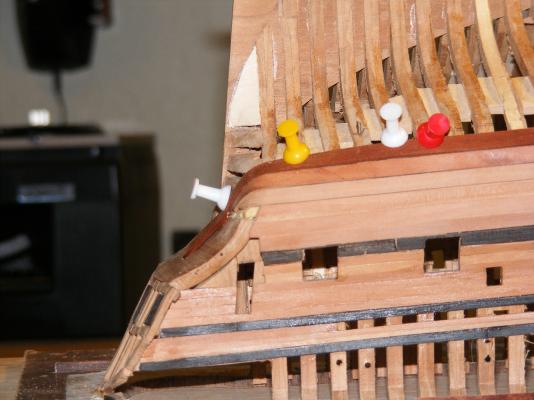-
Posts
26,270 -
Joined
-
Last visited
Content Type
Profiles
Forums
Gallery
Events
Everything posted by mtaylor
-
Thanks guys. There's been a lot of blood, sweat, and tears to get it to do this along with some extra cash to upgrade a couple of bits. I've not seen the magazine Jeff. The tech is maturing and the price points on a lot of machines are rapidly changing to meet marketing conditions as the market settles in. There's at least one company is (from what I'm reading in other forums) in dire straights for bad reviews, horrible service and ignoring customers (not MM, by the way). Unless there's a pressing need, I'd hold off for another 6 months. For example, the $3000+ machine (50W laser) that I was interested in but not quite affordable is now down to $2000. I still wouldn't have room for it as its a good 18" longer than one I have...... <sigh><need a bigger workshop>
-
Cathead, I had to look twice at the framing... and then at the Chaperon. There is a big difference, isn't there. Would you get less buckling using narrower planks? (Yep.. tossing stuff on the wall... ) Or would you need to do drop planks???
-
A side update... I'm doing the drawings for the ship's boats and I'll be putting one together while waiting for glue to dry on the main hull. So as not to "interrupt the flow of things", I'll either make them a separate log like Danny did for his, or just hold off until the planking is done. Here's a bit of where I am on these. The longboat drawings are done but still need some tweaking. Seems that I didn't always account for kerf which I finally managed to get down to 0.015" (0.381mm). And man, these things are tiny. Might just be the end of me.... Here's two pics of the parts being cut, which is something I couldn't do on a scrollsaw to save my soul. I tried and failed several times. And here's the resulting parts.... the keel is 5" or 125mm long. The keel and assorted structural members are 1/16" (1.5mm) thick cherry. The frames (which look like bulkheads are 1/32" (0.79mm)) cherry and the other parts (knees, seats, thwarts on the upper left and upper right) are 1/32" from scrap holly but I'll have to redo them in boxwood as soon I as get some milled down. I'm planning on using Chuck's method but gluing the bulkheads upside down into a basswood jig for handling and planking. There (hopefully) will be two more boats. A barge and cutter and all will be nested into the longboat.
-
Uh.. Tom... I was wrong. They will have to be spiled... And I'll be needing stealers. I'm on my 3rd iteration of planks on this round... I'm hoping..... but alcohol and sanding sticks are at the ready.
-

H.M.S. Victory, Heller, 1/100, Onward and Upwards.
mtaylor replied to Izzy Madd's topic in Plastic model kits
Wow.. that is a problem, Izzy. Which one is the "real" one???? I have no idea but at least you know this is getting read. I hope you get an answer. -
Nicely done, Dave. Looks great.
- 962 replies
-
- sovereign of the seas
- ship of the line
-
(and 1 more)
Tagged with:
-
Your not being argumentative. I just figured we were bouncing ideas off the wall and waiting to see what sticks. :D That is one very impressive frame build.
-
I do like the look of the "antiqued" brass. I believe there's times when artistic license has to over-ride historical accuracy.
-
Cathead, I'm going to fall back on "You're the Captain, she's your ship." reasoning. If you're painting it, go with whatever works within your timeline and budget. A smooth painted surface will (as someone once said) hide a lot sins.
-
Steve, Engine room looks great. It may not be seen by most folks unless you open up the cabin area, but you'll know it's there. Well.. we'll know it too..
- 208 replies
-
- john cudahy
- finished
-
(and 1 more)
Tagged with:
-
Nice work there, Mike. Yep... boring but necessary. The No. 15 is a very useful blade for me. It's gets into places nothing else will. They also make a No. 11 sized saw blade which is also great.
- 954 replies
-
- hahn
- oliver cromwell
-
(and 1 more)
Tagged with:
-
Richard, See if you can find Dodds & Moore Building the Wooden Fighting Ship. It's a pretty easy read and has lots of good info from how selected and managed the forests, to raising the frames, bending the planking, even iron mongey. Basically, the planking was put into the steamer for 1 hour per inch thickness plus (as I recall) one hour for the plank. It would have been already spiled when it went into the steamer if needed. They would haul it out and put it on using something like jackscrews to bend it into position and hold it while it cooled.
-
Cathead, The only way I can see is spiling the planks at the bow. Check out the planking tutorials here on MSW and in the database. There's one by Chuck that's pretty foolproof.
-
Thanks for the comments and support. Sam, I can't answer that about sealing the ports and how well it worked. The French frigates didn't have lids on the gundeck as it was exposed in the waist. They use bucklers insead (a one or two piece scheme of a lid fitted to the outside and then secured from the inside. Tom Short answer.. they stay full width or should. However, for eye appeal, I probably should taper maybe a 32nd of an inch... I'll give that some thought when I start laying planks again. The bigger issue is that if I taper them, I'll have to use some stealers at the stern. Right now, still shaping things. I do need to make a Lowe's trip for a profile/contour gauge to duplicate this work to the other side. Better leave the CC at home and only take cash for this run....
-
Gawd, that's bad on them. I'm surprised they just didn't contact you instead wrapping some string a glue. I'm gong to join the others and sit back to watch and learn.
- 21 replies
-
Tom, Those are the planks, not battens.. just not 100% fitted and sanded. The darker one was still wet. As for tapering, only at the bow are they tapered as such. The French planking is a bit different for frigates of this era than the British or Americans used. They used use 8-12 strakes of thick and wide planking and then went to "normal" (for some value of "normal") planking. The hull is very smooth and unbroken without the obvious wales of the Engish/American ships. Footnote.. the wales are 1 foot wide, for 9 strakes on the 8-pdr frigate. The "normal" planks are 8" wide. Thanks Dan. You're probably right. I've pulled off the three planks landing on the tuck and will sand a bit more. While I agree about the eddys I'm not sure they apply on this ship (I could be wrong) as the waterline is between the lowest full transom and that small transom above the filler block. Hmm... she drew 17 feet with the lowest gun port sitting 4 feet out of the water. The stern windows lower end is at the top of the aft most gunport. They really did play on perception to make this ship look bigger than she really was. I note that the British did a similar deception with the Roebuck by putting an upper row of dummy stern windows on a 44 gun frigate to make it appear to be a 64 or 74 from astern.
-
Good on you, Dave. I think you'll be happy you did replank.
- 962 replies
-
- sovereign of the seas
- ship of the line
-
(and 1 more)
Tagged with:
-
Frank, I'm glad you're happy about the change. Rigging is tough enough but if you can't get the rope secured, it becomes a royal pain.. been there, turned the air blue. The new rails do look more in scale.
-
Wonderful work, John. The deck has look that I really like. Hard to describe, but I like it.
- 745 replies
-
- francis pritt
- mission ship
-
(and 1 more)
Tagged with:
-
I'm hoping for opinions.. and fear not, I can take critique... I've sanded and shaped quite a bit on the last cant frame and the transoms. Is this better? Does it need more work? I removed 5 planks, the 3 now installed are only tacked into place and will need beveling, etc. But I wanted to get an opinion. I'm thinking they look 100% better, but not sure how "accurate" it is. Do I need more work on this area? I managed to sort out what my references show (unfortunately, no planking expansion but that's to be expected) for plank that's now wrapped around a bit. Which what the references seem to show. Thanks in advance.
About us
Modelshipworld - Advancing Ship Modeling through Research
SSL Secured
Your security is important for us so this Website is SSL-Secured
NRG Mailing Address
Nautical Research Guild
237 South Lincoln Street
Westmont IL, 60559-1917
Model Ship World ® and the MSW logo are Registered Trademarks, and belong to the Nautical Research Guild (United States Patent and Trademark Office: No. 6,929,264 & No. 6,929,274, registered Dec. 20, 2022)
Helpful Links
About the NRG
If you enjoy building ship models that are historically accurate as well as beautiful, then The Nautical Research Guild (NRG) is just right for you.
The Guild is a non-profit educational organization whose mission is to “Advance Ship Modeling Through Research”. We provide support to our members in their efforts to raise the quality of their model ships.
The Nautical Research Guild has published our world-renowned quarterly magazine, The Nautical Research Journal, since 1955. The pages of the Journal are full of articles by accomplished ship modelers who show you how they create those exquisite details on their models, and by maritime historians who show you the correct details to build. The Journal is available in both print and digital editions. Go to the NRG web site (www.thenrg.org) to download a complimentary digital copy of the Journal. The NRG also publishes plan sets, books and compilations of back issues of the Journal and the former Ships in Scale and Model Ship Builder magazines.



